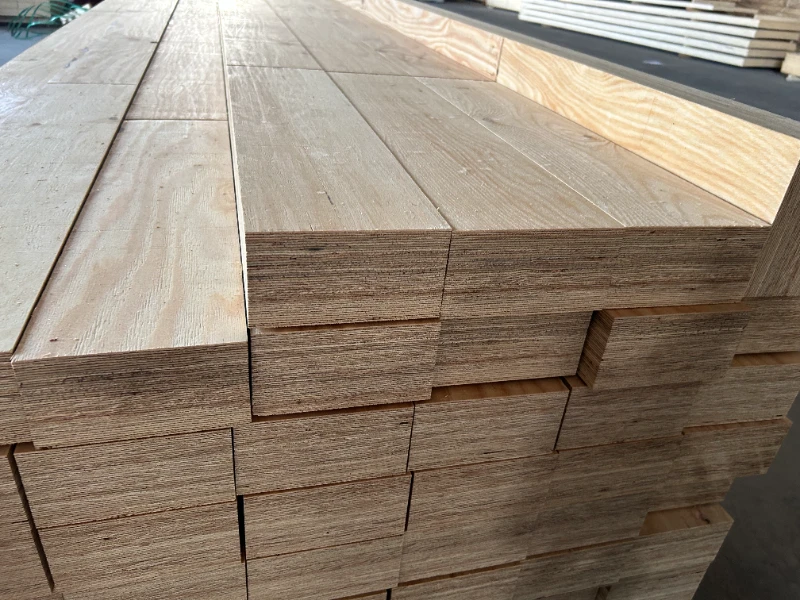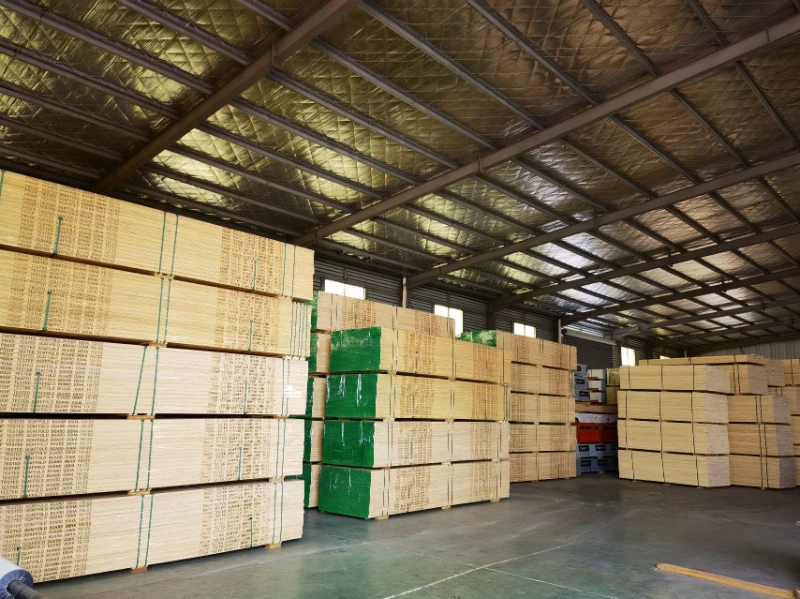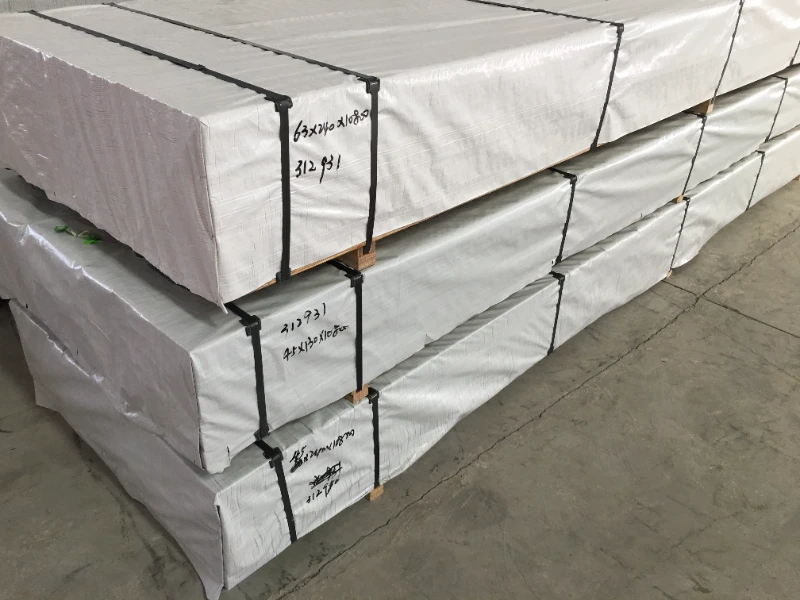This article offers a complete guide on how to properly store plywood, protecting your investment and ensuring your materials remain in top condition for future projects. Whether you're a professional woodworker or a DIY enthusiast, understanding how to manage your plywood inventory is crucial. This guide is worth reading because improper storage can lead to warping, moisture damage, and other issues that can ruin expensive plywood, costing you time and money. We'll cover everything from simple stacking techniques to building a dedicated storage frame, helping you maintain the quality of your plywood.
1. Why is Proper Plywood Storage So Important?
Proper plywood storage is essential for maintaining the quality of the plywood and preventing damage. Plywood, like any wood product, is susceptible to changes in temperature and humidity. Improper storage can lead to warping, bowing, twisting, and even mildew growth. These issues can make the plywood unusable for many projects, especially those requiring precise cuts and a flat surface. The best way to store it is by understanding what damages it.
Think of a piece of plywood like a sponge. It can absorb moisture from the air, causing it to expand and potentially warp. Conversely, in very dry conditions, plywood can lose moisture and shrink. These fluctuations can compromise its structural integrity and make it difficult to work with. Proper storage minimizes these risks, ensuring your plywood remains in optimal condition for when you need it.

2. The Biggest Threat to Plywood: Moisture and Humidity
Moisture is the primary enemy of plywood. High humidity levels can cause the wood fibers to swell, leading to warping and delamination (separation of the plies). Even seemingly small amounts of moisture can cause significant damage over time. This is especially true for plywood stored in direct contact with the ground or in areas with poor ventilation.
Controlling moisture is key to successful plywood storage. This means keeping the plywood dry and avoiding direct exposure to rain, snow, or excessive humidity. Ideally, plywood should be stored in a climate-controlled environment, but this isn't always possible. At the very least, it should be stored in a dry, well-ventilated area, protected from the elements. You need to keep the moisture from destroying your investment.
3. The Golden Rule of Plywood Storage: Keep it Flat!
The most important rule for storing plywood is to keep it flat. Storing sheets of plywood flat prevents warping and bowing, which can occur when the plywood is stored unevenly or on edge for extended periods. Even slight pressure differences across the sheet can cause it to deform over time. The plywood itself will dictate the right way to store it, so keep that in mind.
A flat, level surface is crucial. This could be a dedicated plywood storage rack, a sturdy workbench, or even a flat area of the floor. However, if storing plywood on the floor, it's essential to elevate it to prevent moisture from the ground from being absorbed. Using spacers or 2x4s to create a platform is a simple and effective solution. Be careful of warped sheets.
4. Horizontal vs. Vertical Storage: Which Method is Best?
Both horizontal and vertical storage methods have their pros and cons. Horizontal storage, where plywood sheets are stacked flat, is generally considered the best way to store plywood to prevent warping. This method distributes the weight evenly, minimizing the risk of bending or bowing. However, horizontal storage requires a significant amount of floor space.

Vertical storage, where plywood sheets are leaned almost vertically against a wall, can save space. However, it increases the risk of warping, especially if the sheets are leaned at too steep an angle or if they are not adequately supported. If storing plywood vertically, ensure it's at a slight angle (around 10-15 degrees) and supported along its entire width to prevent sag. Flat against the wall is also not good for plywood.
laminated scaffold boards are an excellent option for creating strong, level storage platforms.
5. Creating a Simple Plywood Storage System with Spacers
A simple and effective plywood storage system can be created using spacers. Spacers, such as 2x4s or other pieces of lumber, are placed between the plywood sheets to allow for air circulation and prevent moisture buildup. This also helps to distribute the weight evenly, reducing the risk of warping. The best way to store the plywood is to take every precaution.
When stacking plywood horizontally, place spacers at regular intervals (every 4-6 feet) to provide adequate support. Ensure the spacers are aligned vertically to create a stable and level stack. This method is particularly useful for storing multiple sheets of plywood of different sizes or thicknesses. This can help avoid damage.
6. Building a Dedicated Plywood Storage Rack or Frame
For more organized and efficient plywood storage, consider building a dedicated rack or frame. A plywood storage rack can be built from lumber or metal and can be designed to accommodate both full sheets and cutoffs. A well-designed rack provides easy access to your plywood and helps to keep things organized. This is a must for anyone wondering how to store plywood.

There are many different designs for plywood storage racks, from simple wall-mounted racks to more elaborate rolling carts. The best design for you will depend on your available space, the amount of plywood you need to store, and your budget. A lumber rack can do wonders.
lvl scaffold planks for sale can be repurposed to create durable shelving for plywood storage.
7. Storing Plywood Outdoors: Protecting it from the Elements
Ideally, plywood should be stored indoors to protect it from the elements. However, if outdoor storage is unavoidable, taking extra precautions to minimize exposure to moisture is crucial. Cover the plywood with a waterproof tarp, ensuring the tarp is securely fastened to prevent it from blowing off and allowing water to reach the plywood.
Elevate the plywood stack off the ground using 2x4s, concrete blocks, or other suitable materials. This will prevent moisture from the ground from being absorbed and will also allow for air circulation underneath the stack. Regularly check the plywood for signs of moisture damage, such as swelling, warping, or mildew.
8. Managing Plywood Cutoffs and Scrap: Efficient Organization
Don't neglect your plywood cutoffs and scrap! These smaller pieces can be valuable for future projects, but they need to be stored properly to prevent damage. A dedicated storage area for offcuts, such as bins, shelves, or a small cart, can help keep your workspace organized and prevent these valuable pieces from being damaged or lost.
Sort scrap plywood by size and type for easy access. Labeling bins or shelves can be helpful, especially if you have a large quantity of scrap. This will save you time and frustration when searching for a specific piece for a small project. You might even consider Structural LVL E13.2 300×63 H2S Treated for organizing your offcuts.
9. Long-Term Plywood Storage: Tips for Extended Periods
For long-term plywood storage, taking extra precautions to ensure the plywood remains in good condition is essential. Ideally, store plywood in a climate-controlled environment with consistent temperature and humidity. This will minimize the risk of warping, swelling, and other moisture-related problems.
If climate control isn't possible, ensure the plywood is stored in a dry, well-ventilated area, protected from direct sunlight and the elements. Regularly inspect the plywood for any signs of damage, and take corrective action if necessary. Consider using a desiccant, such as silica gel packets, to absorb excess moisture in the storage area.
10. Inspecting Your Plywood Inventory: Catching Problems Early
Regularly inspecting your plywood inventory is crucial for catching any potential problems early. Look for signs of warping, bowing, swelling, delamination, or mildew growth. If you notice any damage, take corrective action immediately to prevent it from spreading or worsening.
If you find warped or bowed sheets, try to flatten them by placing them on a flat surface with weight evenly distributed on top. This may help to restore their original shape, although severely warped plywood may be unusable. For sheets that show signs of moisture damage, ensure they are thoroughly dried before later use.
The structural integrity of your material is important.

Summary: Key Takeaways for Storing Plywood
- Keep it flat: Horizontal storage is generally best to prevent warping.
- Control moisture: Store plywood in a dry, well-ventilated area.
- Use spacers: Allow for air circulation and distribute weight evenly.
- Elevate from the ground: Prevent moisture absorption from the floor.
- Protect from the elements: If storing outdoors, use a waterproof tarp and elevate the stack.
- Organize cutoffs and scrap: Dedicated storage bins or shelves keep smaller pieces accessible.
- Regularly inspect: Catch any problems early and take corrective action.
- Consider a dedicated storage rack or frame: For efficient organization and easy access.
- Remember to try and keep the plywood stored properly for the next project.
- Be aware that humidity levels can affect the amount of buildup.
By following these guidelines, you can effectively store plywood, preserving its quality and ensuring it's ready for your next woodworking, carpentry, or building project, whether using hand tools, power tools or other building materials. Be sure to store OSB correctly as well.
Post time: Mar-21-2025




